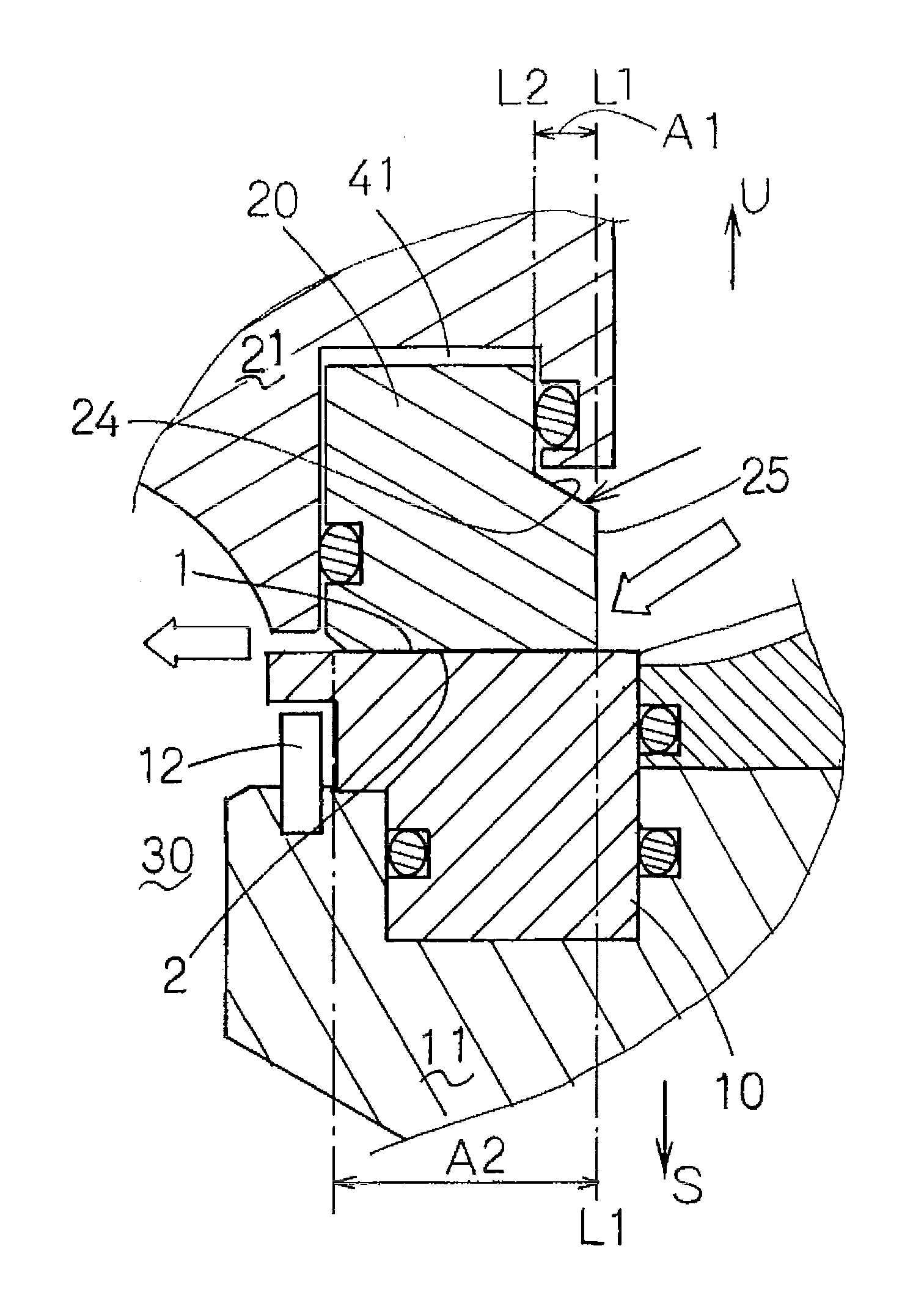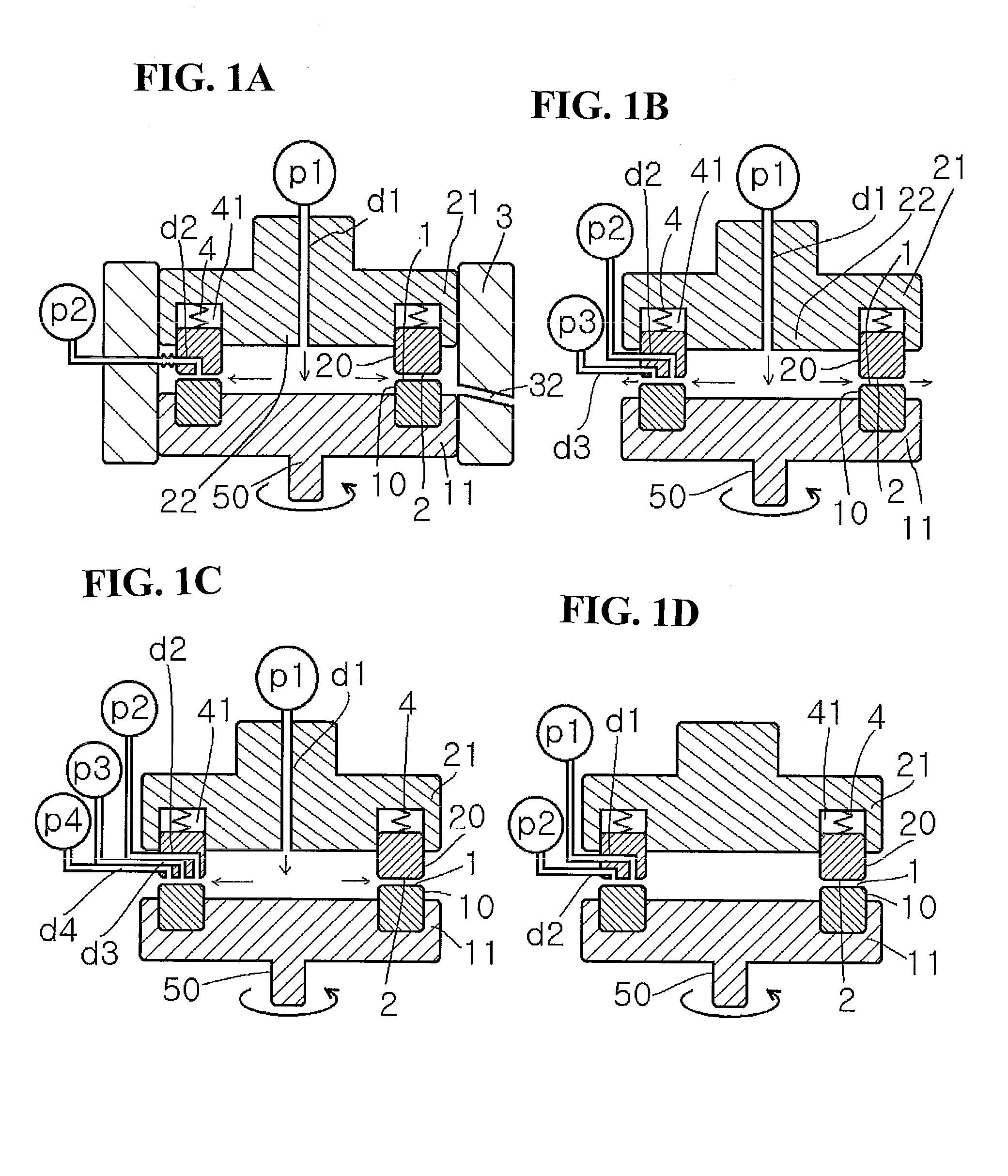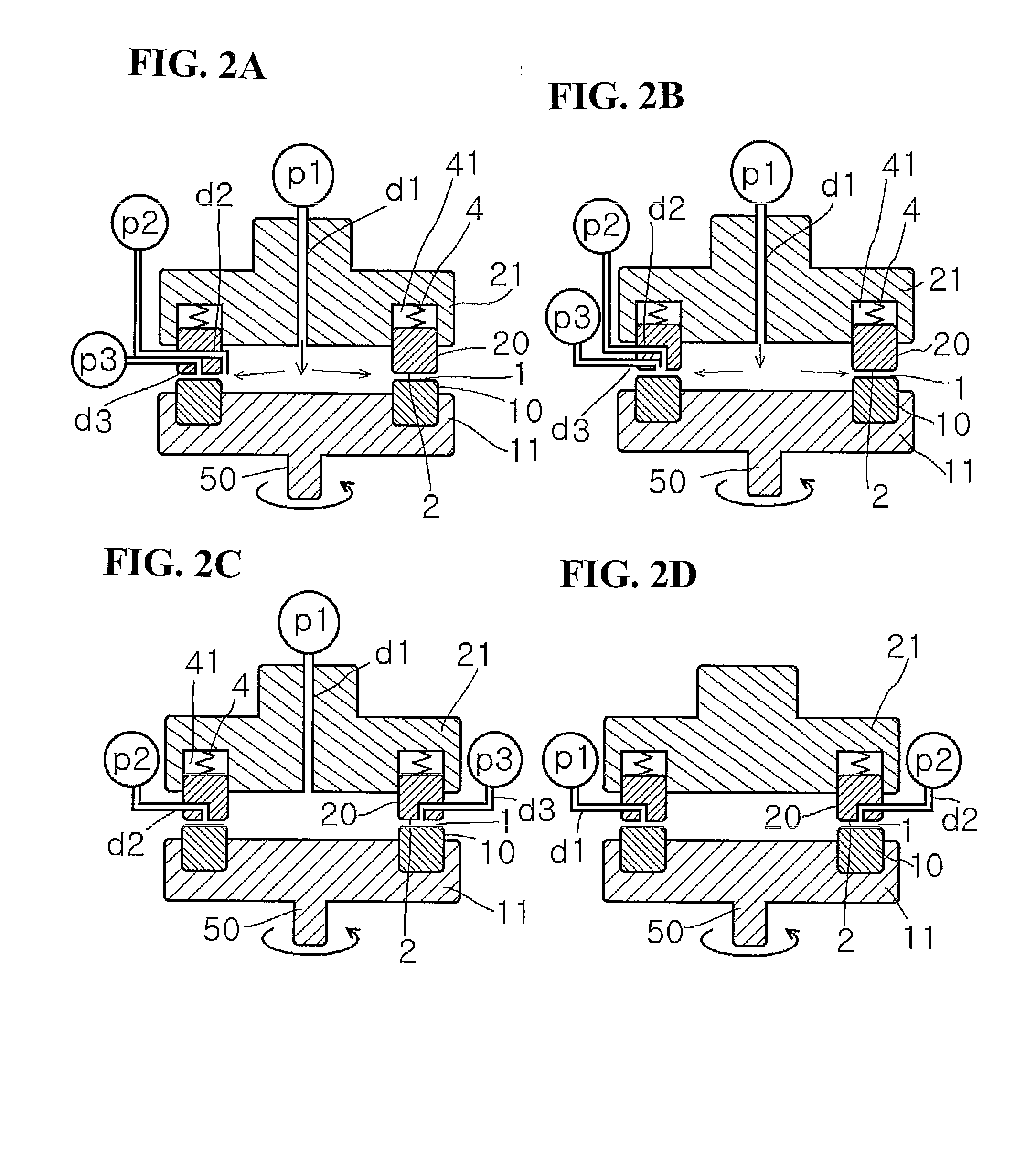Method for producing nanoparticles by forced ultrathin film rotary processing
a technology of ultrathin film and nanoparticles, which is applied in the direction of rotary stirring mixers, grain treatment, transportation and packaging, etc., can solve the problem of substantial inability to reduce the minute space between the processing surfaces to 10 m or less, and achieve excellent separation
- Summary
- Abstract
- Description
- Claims
- Application Information
AI Technical Summary
Benefits of technology
Problems solved by technology
Method used
Image
Examples
example a1
[0432]While an aqueous solution of Disperbyk-184 (manufactured by BYK-Chemie) was sent as a first fluid from the center at a supply pressure / back pressure of 0.02 MPa / 0.01 MPa, at a revolution number of 1000 rpm and at a solution sending temperature of 20° C., an aqueous solution of 3% copper phthalocyanine pigment / 98% conc. sulfuric acid was introduced at a rate of 10 ml / min. as a second fluid into the space between the processing surfaces 1 and 2. A pigment nanoparticle dispersion was discharged from the processing surfaces. When the particle size distribution of the obtained pigment nanoparticle dispersion was measured with a particle size distribution measuring instrument utilizing a laser Doppler method (tradename: Microtrac UPA150, manufactured by Nikkiso Co., Ltd.), the volume-average particle size was 14 nm and the CV value of its particle size distribution was 13%. The pigment nanoparticle dispersion was dialyzed with a dialysis tube against pure water for 24 hours and then...
example a2
[0433]While an aqueous solution of Disperbyk-184 (manufactured by BYK-Chemie) was sent as a first fluid from the center at a supply pressure / back pressure of 0.02 MPa / 0.01 MPa, at a revolution number of 1000 rpm and at a solution sending temperature of 20° C., an aqueous solution of 3% quinacridone pigment / 98% conc. sulfuric acid was introduced at a rate of 10 ml / min. as a second fluid into the space between the processing surfaces 1 and 2. A pigment nanoparticle dispersion was discharged from the processing surfaces. When the particle size distribution of the obtained pigment nanoparticle dispersion was measured with a particle size distribution measuring instrument utilizing a laser Doppler method (trade name: Microtrac UPA150, manufactured by Nikkiso Co., Ltd.), the volume-average particle size was 15 nm and the CV value of its particle size distribution was 14%. The pigment nanoparticle dispersion was dialyzed with a dialysis tube against pure water for 24 hours and then dried t...
example a3
[0436]While ion-exchange water was sent as a first fluid from the center at a supply pressure / back pressure of 0.01 MPa / 0.01 MPa, at a revolution number of 1000 rpm and at a solution sending temperature of 25° C., a solution of 0.5% unsubstituted linear quinacridone pigment / 1-methyl-2-pyrrolidone (NMP) was introduced at a rate of 10 ml / min. as a second fluid into the space between the processing surfaces 1 and 2. A pigment nanoparticle dispersion was discharged from the processing surfaces. When the particle size distribution of the obtained pigment nanoparticle dispersion was measured with a particle size distribution measuring instrument utilizing a laser Doppler method (trade name: Microtrac UPA150, manufactured by Nikkiso Co., Ltd.), the volume-average particle size was 18 nm and the CV value of its particle size distribution was 17%. The pigment nanoparticle dispersion was dialyzed with a dialysis tube against pure water for 24 hours and then dried to give pigment nanoparticle ...
PUM
| Property | Measurement | Unit |
|---|---|---|
| particle size distribution | aaaaa | aaaaa |
| particle size distribution | aaaaa | aaaaa |
| volume-average particle size | aaaaa | aaaaa |
Abstract
Description
Claims
Application Information
 Login to View More
Login to View More - R&D
- Intellectual Property
- Life Sciences
- Materials
- Tech Scout
- Unparalleled Data Quality
- Higher Quality Content
- 60% Fewer Hallucinations
Browse by: Latest US Patents, China's latest patents, Technical Efficacy Thesaurus, Application Domain, Technology Topic, Popular Technical Reports.
© 2025 PatSnap. All rights reserved.Legal|Privacy policy|Modern Slavery Act Transparency Statement|Sitemap|About US| Contact US: help@patsnap.com



